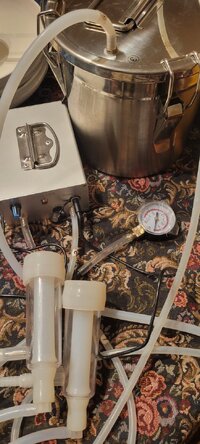Rustic Green Acres
Overrun with beasties
I got this milker second hand. I am wondering what is the difference between this and an expensive one. If I turn this one up to 10lb of pressure it gives my goats teats a hicky. I tried it out on my hand and the suction is fairly strong, and doesn't change with the pulseing. The vacuum gage goes up and down, but the suction to keep it on the teats feels the same. Do better milkers not suction on as hard?

